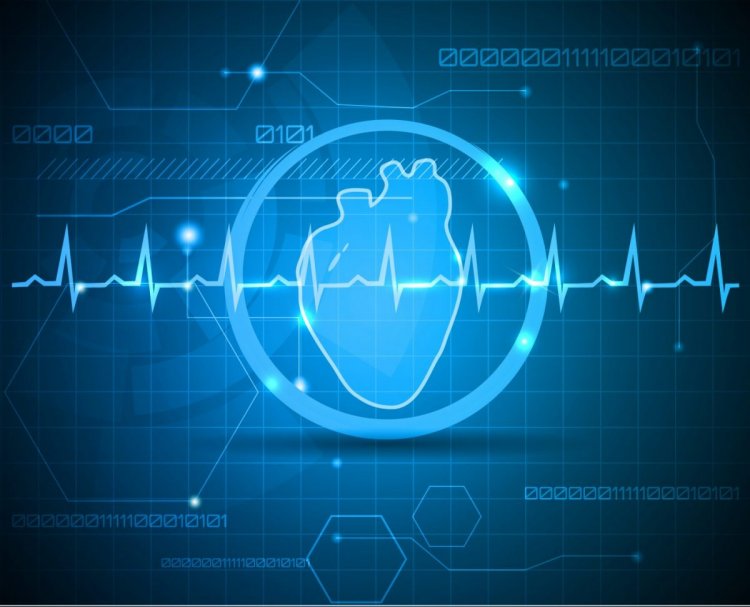Clarity on Classification of Cardiovascular Medical Devices
Safety, quality and performance of medical devices are regulated under the provisions of the Drugs and Cosmetics Act, 1940 and rules made thereunder. For the regulation of medical devices with respect to the import, manufacture, clinical investigation, sale and distribution, the Central Government, after consultation with the Drugs Technical Advisory Board, has notified Medical Devices Rules, 2017 vide G.S.R. 78 (E) dated 31.01.2017 which are to be commence from 01.01.2018

Safety, quality and performance of medical devices are regulated under the provisions of the Drugs and Cosmetics Act, 1940 and rules made thereunder. For the regulation of medical devices with respect to the import, manufacture, clinical investigation, sale and distribution, the Central Government, after consultation with the Drugs Technical Advisory Board, has notified Medical Devices Rules, 2017 vide G.S.R. 78 (E) dated 31.01.2017 which are to be commence from 01.01.2018
In this connection, in exercise of the powers conferred under sub-rule (3) of rule 4 of Medical Devices Rules, 2017, the undersigned hereby classifies the medical devices, based on the intended use of the device, risk associated with the device and other parameters specified in the First Schedule.
List of medical devices placed at Appendix A subjected to the followings:
1. General intended use given against each of the devices is for guidance to the applicants intends to furnish application of import or manufacture of medical devices under the provisions of Medical Devices Rules, 2017. However, a device may have specific intended use as specified by its manufacturer.
2. This list is dynamic and is subject to revision from time to time under the provisions of the Medical Devices Rules, 2017.
Reference link – https://cdsco.gov.in/opencms/opencms/system/modules/CDSCO.WEB/elements/download_file_division.jsp?num_id=NzQ5Mg==
Clarity on Classification of Cardiovascular Medical Devices
|
serial No. |
Medical Device Name |
Intended Use |
Risk Class |
|
1 |
Arrhythmia Detector And Alarm (Including St-Segment Measurement And Alarm) |
The arrhythmia detector and alarm device monitors an electrocardiogram and is designed to produce a visible or audible signal or alarm when atrial or ventricular arrhythmia, such as premature contraction or ventricular fibrillation, occurs. |
C |
|
2 |
Cardiac monitor (including cardiotachometer and rate alarm) |
A cardiac monitor (including cardiotachometer and rate alarm) is a device used to measure the heart rate from an analog signal produced by an electrocardiograph, vectorcardiograph, or blood pressure monitor. This device may sound an alarm when the heart rate falls outside preset upper and lower limits. |
B |
|
3 |
Apexcardiograph (vibrocardiograph) |
An apex cardiograph (vibrocardiograph) is a device used to amplify or condition the signal from an apex cardiographic transducer and to produce a visual display of the motion of the heart; this device also provides any excitation energy required by the transducer. |
B |
|
4 |
Echocardiograph |
An echocardiograph is a device that uses ultrasonic energy to create images of cardiovascular structures. It includes phased arrays and two-dimensional scanners. |
B |
|
5 |
Electrocardiograph |
An electrocardiograph is a device used to process the electrical signal transmitted through two or more electrocardiograph electrodes and to produce a visual display of the electrical signal produced by heart. |
B |
|
6 |
Electrocardiograph electrode |
An electrocardiograph electrode is the electrical conductor which is applied to the surface of the body to transmit the electrical signal at the body surface to a processor that produces an electrocardiogram or vectorcardiogram. |
B |
|
7 |
Vascular clip |
A vascular clip is an implanted extravascular device designed to occlude, by compression, blood flow in small blood vessels other than intracranial vessels. |
B |
|
8 |
Vena cava clip |
A vena cava clip is an implanted extravascular device designed to occlude partially the vena cava for the purpose of inhibiting the flow of thromboemboli through that vessel. |
B |
|
9 |
Intra-aortic balloon |
An intra-aortic balloon is a prescription device that consists of an inflatable balloon, which is placed in the aorta to improve cardiovascular functioning during certain life-threatening emergencies, and a control system for regulating the inflation and deflation of the balloon. |
C |
|
10 |
Intra-aortic balloon control system (balloon pump) |
An intra-aortic balloon control system, which monitors and is synchronized with the electrocardiogram, provides a means for setting the inflation and deflation of the balloon with the |
B |
|
|
|
cardiac cycle. |
|
|
11 |
Ventricular bypass (assist) device |
A ventricular bypass (assist) device is a device that assists the left or right ventricle in maintaining circulatory blood flow. The device is either totally or partially implanted in the body. |
D |
|
12 |
Pacing system analyzer |
A pacing system analyzer (PSA) is a prescription device that combines the functionality of a pacemaker electrode function tester and an external pacemaker pulse generator (EPPG). It is connected to a pacemaker lead and uses a power supply and electronic circuits to supply an accurately calibrated, variable pacing pulse for measuring the patient’s pacing threshold and intracardiac R-wave potential. A PSA may be a single, dual, or triple chamber system and can simultaneously deliver pacing therapy while testing one or more implanted pacing leads. |
C |
|
13 |
Implantable pacemaker pulse generator |
An implantable pacemaker pulse generator is a device that has a power supply and electronic circuits that produce a periodic electrical pulse to stimulate the heart. This device is used as a substitute for the heart’s intrinsic pacing system to correct both intermittent and continuous cardiac rhythm disorders. This device may include triggered, inhibited, and asynchronous modes and is implanted in the human body. |
D |
|
14 |
Pacemaker lead adaptor |
A pacemaker lead adaptor is a device used to adapt a pacemaker lead so that it can be connected to a pacemaker pulse generator produced by a different manufacturer. |
C |
|
15 |
Pacemaker generator function analyzer |
A pacemaker generator function analyzer is a device that is connected to a pacemaker pulse generator to test any or all of the generator’s parameters, including pulse duration, pulse amplitude, pulse rate, and sensing threshold. |
C |
|
16 |
Cardiovascular permanent or temporary pacemaker electrode |
A temporary pacemaker electrode is a device consisting of flexible insulated electrical conductors with one end connected to an external pacemaker pulse generator and the other end applied to the heart. The device is used to transmit a pacing electrical stimulus from the pulse generator to the heart and/or to transmit the electrical signal of the heart to the pulse generator. |
C |
|
17 |
Pacemaker test magnet |
A pacemaker test magnet is a device used to test an inhibited or triggered type of pacemaker pulse generator and cause an inhibited or triggered generator to revert to asynchronous operation. |
A |
|
18 |
Pacemaker programmers |
A pacemaker programmer is a device used to noninvasively change one or more of the electrical operating characteristics of a pacemaker. |
C |
|
19 |
Pacemaker repair or replacement material |
A pacemaker repair or replacement material is an adhesive, a sealant, a screw, a crimp, or any other material used to repair a pacemaker lead or to reconnect a pacemaker lead to a pacemaker pulse generator. |
D |
|
20 |
Annuloplasty ring |
An annuloplasty ring is a rigid or flexible ring implanted around the mitral or tricuspid heart valve for reconstructive treatment of valvular insufficiency. |
C |
|
21 |
Carotid sinus nerve stimulator |
A carotid sinus nerve stimulator is an implantable device used to decrease arterial pressure by stimulating Hering’s nerve at the carotid sinus. |
D |
|
22 |
Replacement heart valve |
A replacement heart valve is a device intended to perform the function of any of the heart’s natural valves. This device includes valves constructed of prosthetic materials, biologic valves (e.g., porcine valves), or valves constructed of a combination of prosthetic and biologic materials. |
D |
|
23 |
Endomyocardial biopsy device |
An endomyocardial biopsy device is a device used in a catheterization procedure to remove samples of tissue from the inner wall of the heart. |
D |
|
24 |
Extracorporeal circuit and accessories for long-term respiratory/cardiopulmonary failure |
An extracorporeal circuit and accessories for long-term respiratory/cardiopulmonary support (>6 hours) is a system of devices and accessories that provides assisted extracorporeal circulation and physiologic gas exchange of the patient’s blood in patients with acute respiratory failure or acute cardiopulmonary failure, where other available treatment options have failed, and continued clinical deterioration is expected or the risk of death is imminent. The main devices and accessories of the system include, but are not limited to, the console (hardware), software, and disposables, including, but not limited to, an oxygenator, blood pump, heat exchanger, cannulae, tubing, filters, and other accessories (e.g., monitors, detectors, sensors, connectors). |
C |
|
25 |
Cardiopulmonary bypass bubble detector |
A cardiopulmonary bypass bubble detector is a device used to detect bubbles in the arterial return line of the cardiopulmonary bypass circuit. |
B |
|
26 |
Cardiopulmonary bypass vascular catheter, cannula, or tubing |
A cardiopulmonary bypass vascular catheter, cannula, or tubing is a device used in cardiopulmonary surgery to cannulate the vessels, perfuse the coronary arteries, and to interconnect the catheters and cannulas with an oxygenator. The device includes accessory bypass equipment. |
B |
|
27 |
Cardiopulmonary bypass heart-lung machine console |
A cardiopulmonary bypass heart- lung machine console is a device that consists of a control panel and the electrical power and control circuitry for a heart-lung machine. The console is designed to interface with the basic units used in a gas exchange system, including the pumps, oxygenator, and heat exchanger. |
B |
|
28 |
Cardiopulmonary bypass defoamer |
A cardiopulmonary bypass defoamer is a device used in conjunction with an oxygenator during cardiopulmonary bypass surgery to remove gas bubbles from the blood. |
C |
|
29 |
Cardiopulmonary bypass heat exchanger |
A cardiopulmonary bypass heat exchanger is a device, consisting of a heat exchange system used in extracorporeal circulation to warm or cool the blood or perfusion fluid flowing through the device. |
B |
|
30 |
Cardiopulmonary bypass temperature controller |
A cardiopulmonary bypass temperature controller is a device used to control the temperature of the fluid entering and leaving a heat exchanger. |
B |
|
31 |
Cardiopulmonary bypass arterial line blood filter |
A cardiopulmonary bypass arterial line blood filter is a device used as part of a gas exchange (oxygenator) system to filter nonbiologic particles and emboli (blood clots or pieces of foreign material flowing in the bloodstream which will obstruct circulation by blocking a vessel) out of the blood. It is used in the arterial return line. |
C |
|
32 |
Cardiopulmonary bypass cardiotomy suction line blood |
A cardiopulmonary bypass cardiotomy suction line blood filter is a device used as part of a gas exchange (oxygenator) system to filter nonbiologic particles and emboli (a blood clot or a piece of foreign material flowing in the bloodstream which will obstruct circulation by blocking a vessel) out of the blood. This device is intended for use in the cardiotomy suction line. |
B |
|
33 |
Cardiopulmonary bypass pulsatile flow generator |
A cardiopulmonary bypass pulsatile flow generator is an electrically and pneumatically operated device used to create pulsatile blood flow. The device is placed in a cardiopulmonary bypass circuit downstream from the oxygenator. |
D |
|
34 |
Intraluminal artery stripper |
An intraluminal artery stripper is a device used to perform an endarterectomy (removal of plaque deposits from arterisclerotic arteries.) |
B |
|
35 |
External cardiac compressor |
An external cardiac compressor is an externally applied prescription device that is electrically, pneumatically, or manually powered and is used to compress the chest periodically in the region of the heart to provide blood flow during cardiac arrest. External cardiac compressor devices are used as an adjunct to manual cardiopulmonary resuscitation (CPR) when effective manual CPR is not possible (e.g., during patient transport or extended CPR when fatigue may prohibit the delivery of effective/consistent compressions to the victim, or when insufficient EMS personnel are available to provide effective CPR). |
C |
|
36 |
External transcutaneous cardiac pacemaker |
An external transcutaneous cardiac pacemaker (noninvasive) is a device used to supply a |
C |
|
|
|
periodic electrical pulse intended to pace the heart. The pulse from the device is usually applied to the surface of the chest through electrodes such as defibrillator paddles. |
|












